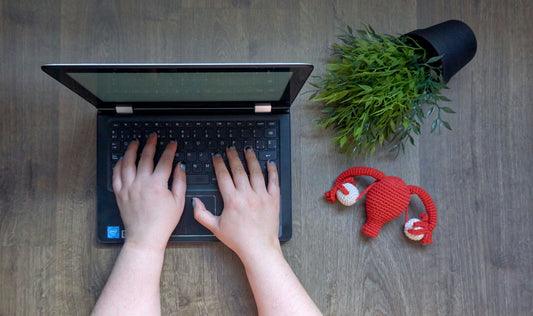Blood sugar control or balance can seem like this mystical, hard-to-attain health practice, that confuses many, but I’m here to simplify it and help you make smart blood sugar choices.
Let's look first at what happens when we eat food that contains any type of carbohydrate. Remember, carbohydrates come in many different forms but are all eventually broken down into mostly glucose, some fructose and a little bit of galactose if you eat dairy products.
When you eat food containing carbohydrates the carbohydrates are broken down by the digestive system until the sugar molecules can be absorbed by the small intestine into the bloodstream and then taken to the liver. The liver will then store the glucose or put it back into the bloodstream to be used by other parts of the body. The rate at which the liver, muscles or fat cells will uptake and store glucose is controlled by the hormone insulin. Insulin is produced by your pancreas anytime there is glucose in your bloodstream.
Short-term increases in insulin after carbohydrate consumption is normal. The problem arises when cells stop responding to the insulin as they should because of continual blood sugar spikes over a long period (not the odd day or week of high-carb snacking!). Think of insulin like a key, and the cell like a lock. Insulin unlocks the cell so that glucose can get inside. If the cell stops responding to the insulin key we call it ‘insulin resistance.’
For a short time, the pancreas will adapt by producing more insulin so there are more keys to unlock the cells. This will work for a while, and then the cells will just increase their resistance to insulin. The result of higher levels of glucose in the bloodstream increases your risk factors of developing PCOS, acne, type 2 diabetes, heart disease, Alzheimer’s and many more inflammatory-based conditions.
Spike vs normal blood sugar elevation post breakfast
The example below shows you want a spike looks like (diagram 1) vs what consistent blood sugar looks like (diagram two).

You can see that buy adding some protein powder and nut butter and drinking the coffee after food, my blood sugar has stayed far lower for longer. Rather than a quick spike and crash as seen in the first breakfast trial.

The main goal for better blood sugar health:
- Keep blood sugar more consistent, and reduce the number of blood sugar spikes over the day.
Why do we care about blood sugar spikes?
- Blood sugar spikes cause oxidative damage and glycation - hello ageing and inflammation!
- You get hungry quicker after a blood sugar spike
- You are far more likely to crave high-sugar foods after a spike
- You are more prone to poor sleep and low energy the more blood sugar spikes you have over the day
- You may experience more acne breakouts
- Ovulation can be impaired causing hormonal symptoms and fertility problems
7 tips to reduce the number of blood sugar spikes in the day
No naked carbohydrates! When you eat food containing carbohydrates try to dress them up with some protein pants and a fat or fibre t-shirt. The addition of protein, fat or fibre to carbohydrates helps to slow the absorption of glucose into the bloodstream.
- Examples:
- Crackers + cheese
- Rice + canned tuna and avocado
- Fruit + ¼ cup nuts or nut butter
- Toast + peanut butter
- More blood-sugar-friendly meal ideas here
Increase the fibre content of your meals by adding more veggies. Not only does this increase your nutrient intake for the day, but the increased fibre also helps to slow glucose absorption. There is some evidence to suggest that eating your veggies before the more carbohydrate-rich foods (pasta, rice, potato) will further slow glucose absorption.
Consume dessert WITH your main meal, rather than an hour or so later. Desserts are high in carbohydrates, and contain some fat, but are typically lower in fibre and protein. By eating these sweet snacks with a main meal you can slow the absorption of some of the carbohydrates with the fat, protein and fibre from your main meal.
Supplement with magnesium to help lower fasting glucose and improve cellular response to insulin. We all know that magnesium is a magical mineral so it’s no surprise it helps blood sugar control too. My favourite form of magnesium is magnesium glycinate at a dose of 300mg of magnesium (total magnesium) each night before bed.
Build more muscle so you have more cells using the glucose you consume. Building and then maintaining muscle mass is proving to be one of the key practices for improving our health now while also preventing future health issues. Lifting weight 3+ times a week while consuming enough protein to support muscle growth can dramatically change your response to glucose.
Go for a quick stroll after your meals. A brisk walk for 15 minutes after a meal can help to lower the blood glucose level by allowing your muscles to use some of the glucose you just ate. While this won’t be appropriate to do at every meal, it certainly gives you more reason to head out on that post-lunch walk you always promise yourself you will do!
Get some help! I get it, understanding which foods are high carb, low carb, protein rich or contain fibre can be confusing! That’s why I have put together meal plans and recipe guides to help take the thinking out of feeding yourself. For hormone-friendly, blood-sugar-balanced meals and ideas click here.




